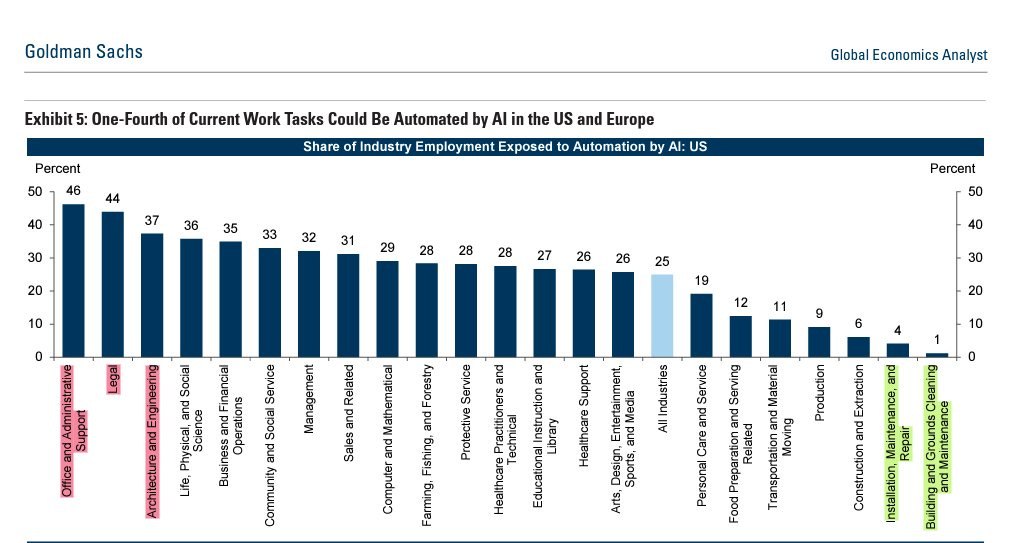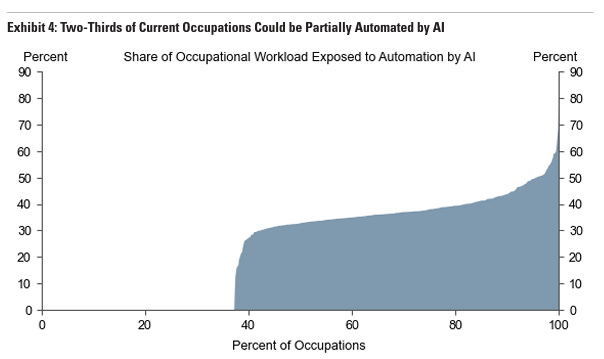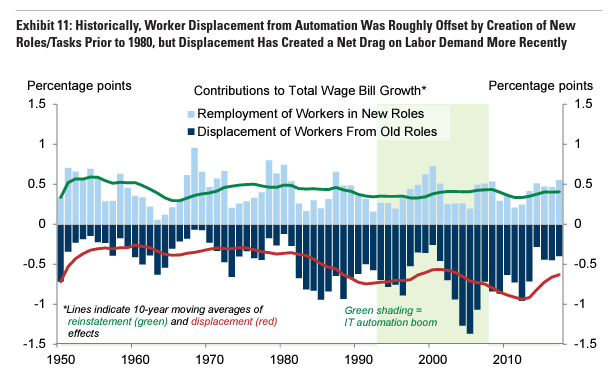The Future of Work: 300 Million Jobs Impacted by AI
A Comprehensive Look at Goldman Sachs' AI Report on Economic Growth
As Artificial Intelligence (AI) continues to explode, it becomes increasingly important to understand its potential impact on the labor market and global economy. Goldman Sachs has recently released a report on the economic growth implications of AI, providing some pretty cool insights into the future of work.
Let’s delve into the key takeaways and additional points from the report, outlining how generative AI technology could reshape labor markets, productivity, and industries.
Key Takeaways from the Report:
Labor Market Disruption
2/3 of current jobs, both in the US and Europe, exposed to AI automation
1/4 of current work could be substituted by generative AI
300 million full-time jobs globally could be exposed to automation
Productivity Boom
Opportunities for cost savings and increased productivity
1.5% annual US labor productivity growth over a 10-year period due to AI
Investment in AI
Increased mentions of AI in earnings calls of publicly-traded companies
Global private investment in AI reached $94 billion in 2021, a 5x increase from 5 years prior
Job Automation Exposure
High exposure for administrative (46%) and legal (44%) jobs
Low exposure for construction (6%) and maintenance (4%) jobs
Future of Work: AI's Role
AI to substitute (7%), complement (63%), or not affect (30%) current US employment
Productivity Boost from AI-driven Automation
Freed-up capacity can boost worker output by 2-3% per year
Displaced workers will be re-employed in new occupations, boosting total output
Examples: webpage designers, software developers, digital marketers
Widespread AI Adoption Potential Impact
7% ($7tn) increase in annual global GDP over a 10-year period
US investment in AI to approach 1% of US GDP by 2030
Here’s another way to organize these stats and details
Generative AI Capabilities
Can produce content indistinguishable from human-created output
Potential to automate up to 1/4 of current work
Occupational Tasks Exposure
Roughly 2/3 of current jobs in the US and Europe exposed to AI automation
Global extrapolation indicates 300 million full-time jobs exposed
Labor Market Disruption and Opportunities
Cost savings and increased productivity
Businesses should invest in retraining programs for affected employees
Exploration of new job opportunities created by generative AI technology
Potential Downsides
Exacerbated income inequality
Ethical concerns around data privacy and ownership
Early Stage of Generative AI Technology
Significant uncertainty around labor market impact
Breaks down communication barriers between humans and machines, leading to potentially large macroeconomic effects
Policymaker Considerations
Implement measures like universal basic income or automation tax to mitigate potential negative labor market impacts
Industries Less Susceptible to Automation
Healthcare and education, due to reliance on human interaction and creativity
Emphasis on Ongoing Research and Development
Continued R&D in generative AI technology essential to fully comprehend its societal impact
With generative AI technology still in its early stages, the potential macroeconomic effects and labor market impacts remain uncertain. However, the ability of generative AI to break down communication barriers between humans and machines represents a significant advancement that could lead to large-scale changes in the global economy.






